In nature aquaristics and aquascaping the term "hardscape" is understood as any natural decoration such as driftwood and stones. On the other hand, aquatic plants as soft elements are being referred to as “softscape”. In aquascaping, hardscape has at least as high a value as water plants - especially if you want to create stone landscapes based on the Japanese model (Iwagumi). In this respect, when planning and setting up your layout, you should look for beautiful materials (such as those with a pronounced structure or grain). We offer a rich assortment of different types of stones and woods resp. driftwood, which we’d like to present here in detail.
Stones
Fundamentally, one should distinguish between stones that behave water neutral and those that have a slightly hardening character. While stone types such as Lava and Dragon Stones have no influence on the water values, straight types with a beautiful fissured surface such as Seiryu or Elephant Rocks are mildly calcareous. Especially if CO2 injection equipment is used, the resulting carbonic acid will solubilize the lime compounds from the stones. Thus, both the carbonate- and total hardness of the aquarium water will increase. In order to obtain softer water, one can easily counteract this with regular and generous water changes with demineralised water from a reverse osmosis system.
It is very advisable to clean resp. rinse all stone decoration under running water before use in an aquarium. This first and foremost removes fine dust particles which will otherwise fog up your tank. Especially Dragon Stone, also called Ohko Stone, is usually prone to having clay residue in its nooks and crannies. This should be scraped off/removed with a sharp-pointed object and the stones washed off thoroughly.
An overview of all water neutral stones available through Aquasabi
-
Ohko Dragon Stone, brownish-reddish stone with strong, pitted grain.
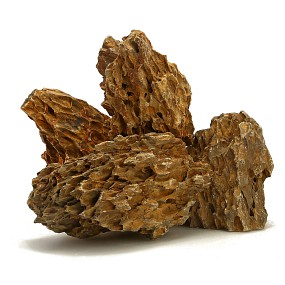
-
Black Lava, light, porous, dark coloured stone
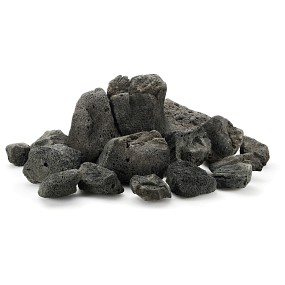
-
Unzan Stone, Stone with lava structure and plant pockets
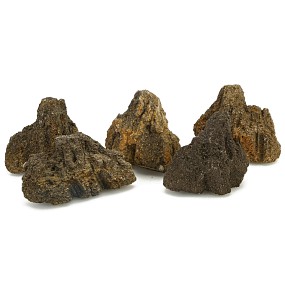
-
Koke Stone, dark, angular stone with a rough surface
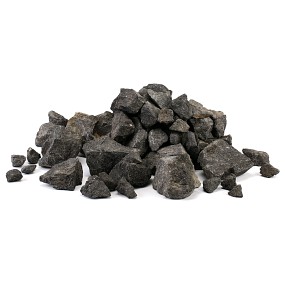
-
Manten Stone, rugged, structured stone with partly different colors
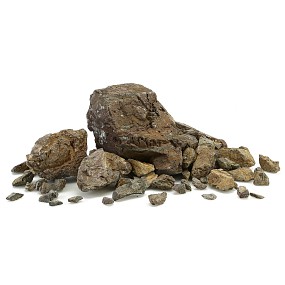
-
Sansui Stone, dark, layered stone with a slightly rough surface
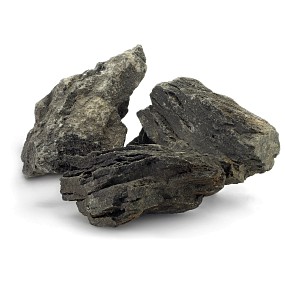
Overview of all hardening stones available through Aquasabi
-
Seiryu, rugged, grey stone, partially with white veins
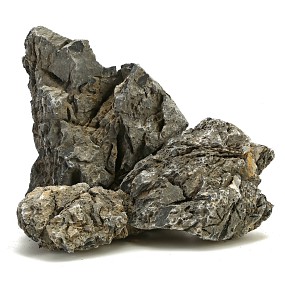
-
Black Pagoda, layered, dark stone with brown veins
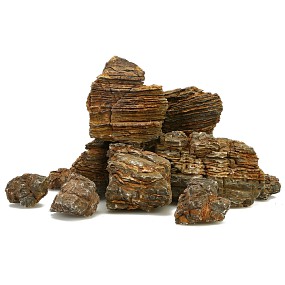
-
Grey Rocks, rugged, brighter stone with a rounder shape
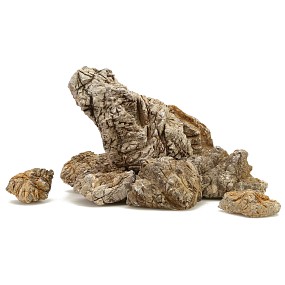
-
Frodo Stone, grey-brown stone with strong furrows
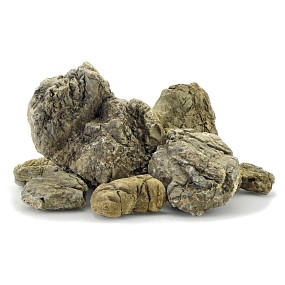
Wood
There are also differences in woods or roots for aquascaping. On the one hand, there is the difference in the density of the wood, which causes low-density wood types such as Red Moor Wood or Talawa Wood to initially float in the water. These varieties should either be pre-soaked, so that they absorb water for a time (and get heavier) or held down with stones. Woods like Mangrove or sometimes also River Wood are often heavy enough to sink directly. In individual cases, this should be checked for each driftwood before use in the aquarium. Especially the higher-density woods tend to release humic substances to the water, which cause the water to turn brown. If you want to have crystal-clear water right from the start, we advise you to use the filter medium Seachem Purigen which removes brown colourations in no time.
Incidentally, it is normal for a white mucous carpet or bacterial lawn to form on some roots under water in the early days. This is harmless and usually disappears by itself after some time. Otherwise, especially snails, shrimp and some fish species are happy about this additional food source.
All woods are photographed and offered as individual pieces by us. So our customers get exactly their selected item.
Overview of delicate woods available through Aquasabi
-
Moorwood, beautiful, forked wood in various shapes and colours
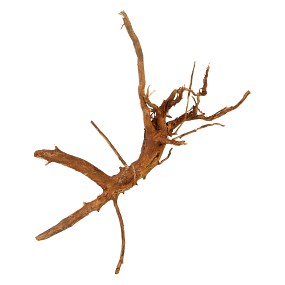
-
Talawa Wood, straight but branched wood with an interesting bark structure
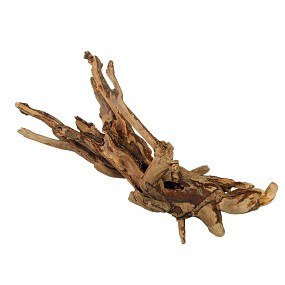
-
Red Moorwood, slightly reddish, very branched wood
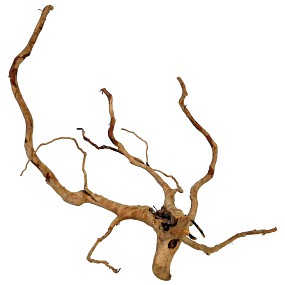
An overview of more compact driftwoods available through Aquasabi
-
Dark Iron, dark driftwood with an interesting grain
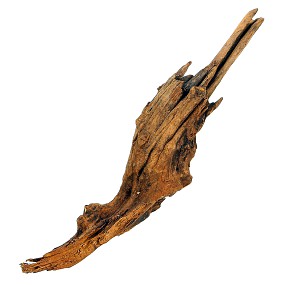
-
Mangrove, reddish, dark wood with a prominent grain
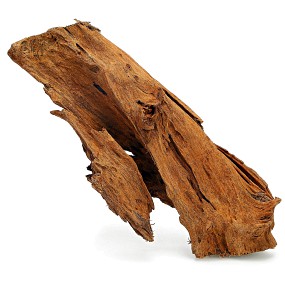
-
Mekong, straight, narrow driftwood with deep furrows and knotholes
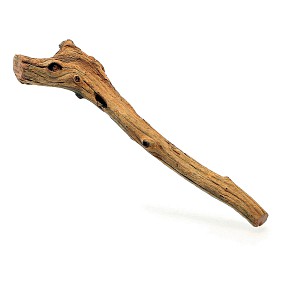
Selection
To be able to set up as varied and detailed as possible, one should collect material in different shapes and sizes. If necessary, driftwood and stones can also be worked with a suitable tool to create smaller pieces and fragments.
Likewise, there should always be enough hardscape to choose from, so that you can try out several options while designing and have alternatives. Of course, driftwoods and stones can also be combined. This ensures a very natural appearance. You should avoid mixing different types of stone or woods. The use of different stone types is not harmonious.
The hardscape may seem very powerful and dominant before planting but it is even advisable to "overdo" it a bit, because it should be kept in mind, that about half of the visible decoration will later be overgrown or covered by plants anyway.